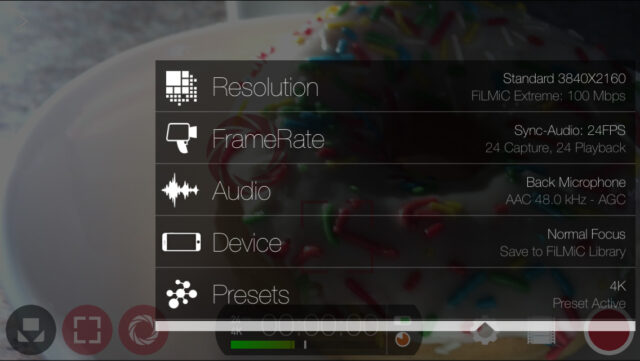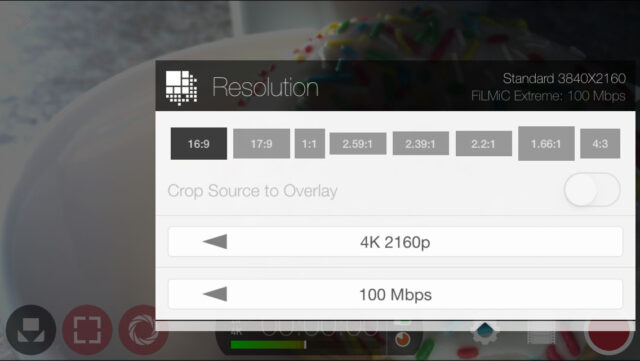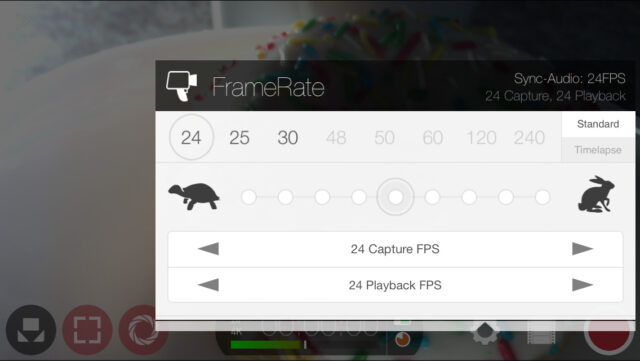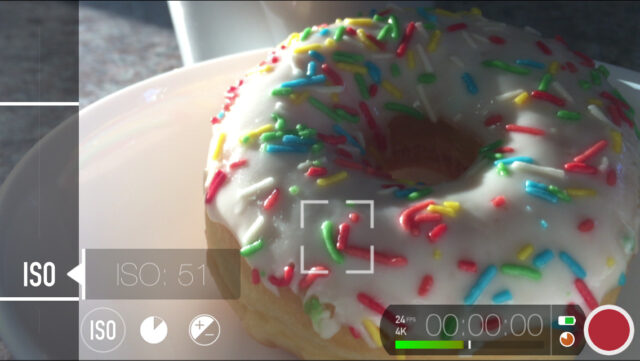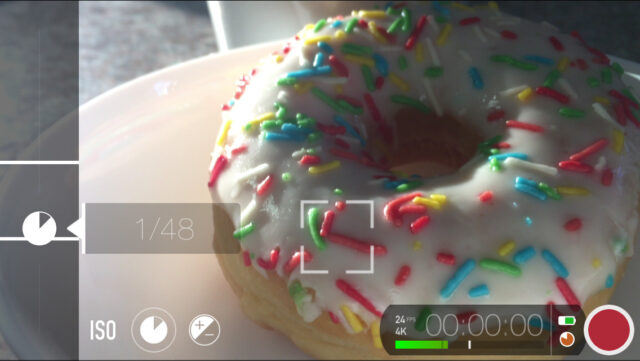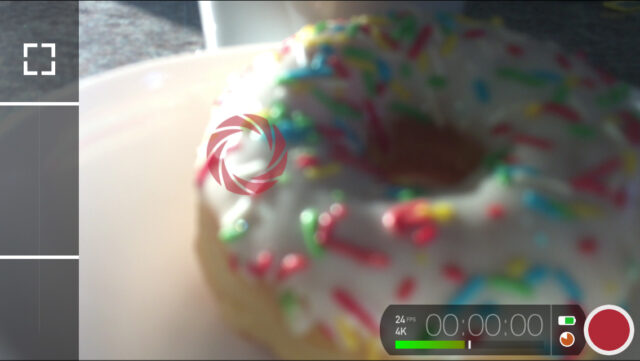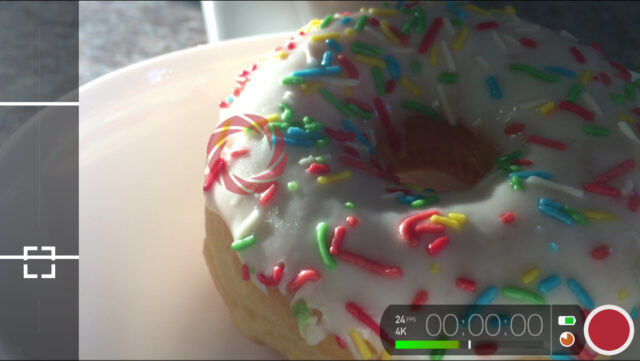
Achieving cinematic smartphone video results is not just a matter of taking it out of your pocket, point and shoot. Use these 10 tips to extract the best from your phone camera.
Here’s a short video I shot recently at Dubai Creek. It was edited and color graded in DaVinci Resolve, and shows what is possible with a professional grade in post if you have well shot footage to begin with. Tutorials will be coming up soon on my YouTube channel.
Everything I’m about to say comes down to one principle when dealing with any camera with limited hardware that doesn’t allow you room for error:
When it comes to shooting cinematic smartphone video, make sure you record the absolute best image you can in camera, because you can’t really fix it in post.
Now, having established that, let’s get down to it:
1. Pro video camera app
If you want to shoot cinematic smartphone video, the first thing to do is buy a video camera app that gives you manual control over your camera and allows recording at maximum bit rate. In addition, the camera has a fixed aperture lens so there’s no iris control, which means your exposure will be the result of just your ISO setting and shutter speed. This is important to understand.
Personally, I use Filmic Pro. I like it, but it isn’t the only one out there. Mavis is very good also, and gives you a histogram which is very useful for judging your exposure.
Shoot at UHD 4K and at maximum bitrate, which is around 100 – 105Mbps. Save the 1080p high frame rate setting for specific special shots. It’s much more important to have the maximum bitrate and maximum resolution for post. I choose to shoot at 24fps for most shots.
These are the most important things you want to learn to use manually.
- ISO
- Shutter Speed
- Focus
2. Shoot within the limits of your phone’s camera
It is important to be aware of the limitations of your phone’s camera. The main one, and one that will affect how you will shoot, is dynamic range. Every camera sensor and camera system as a whole has a limited range of overall scene luminance (brightness) it can handle while still recording useful image data.
This range is pegged at the maximum luminance level, beyond which the camera just records pure white. From there, we count down to the lowest useful luminance limit, below which there is too much noise for the image to be of any use. This range is measured in stops, and every halving, or doubling of light counting as a stop.
The dynamic range limit is mostly determined by how well the sensor performs in low light, and how well it can reduce noise in the shadows.
To recap:
Your useful maximum luminance level is determined by the point at which the sensor’s photosites are saturated. In other words, the point where the sensor is physically unable to respond to further increases in light above that point, rendering these pixels are pure white.
The useful minimum luminance level is determined by the lowest (darkest) point at which there is an acceptable (low) amount of noise in the image.
The range in between these extremes is the dynamic range.
As far as i have been able to establish, the iPhone sensor gives you 7-8 stops of dynamic range, or contrast ratio. For the best results, you need to make sure the maximum contrast in your scene falls within this limit.
3. Lighting and time of day
Choose your timings when shooting outdoors carefully to get the best looking image possible from your camera. Also make sure you have enough light when shooting interiors, especially at night.
This ensures you have the best options open to you later in post production to enhance the image. As with any 8-bit 4:2:0 video, you can color grade it if you’ve recorded a great image to begin with, but fixing exposure problems in post can be impossible. Over exposed (blown out) areas in your image are also impossible to correct, so it’s best to avoid over-exposing altogether.
Again, it comes down to making sure you record the absolute best image you can in the first place.
Keeping in mind a maximum contrast ratio (dynamic range) of 7-8 stops, you’ll want to always shoot any exterior shots in the early morning or late afternoon/early evening depending on the time of year and your daylight hours.
If the weather is overcast, you can likely shoot outside any time of the day. But if there is sunshine and blue sky, you’ll definitely run into problems if you try to shoot under high sun.
4. Exposure
Choosing your exposure with a phone camera is often a trade off. In some cases you can capture all the light and contrast in your scene, but sometimes you have to choose between retaining detail in the highlights or in the shadows, or find some middle ground and compromise.
When you choose to compromise, make sure you are aware of what detail you are going to lose, and know how it may affect you further down the line.
Exposure on a phone camera with a fixed aperture is going to be controlled by setting your ISO, and your shutter speed.
ISO
I rate the iPhone for example at about 50 ISO native, and using Filmic Pro I can fix the ISO to 50 (or 51 in this case), which will give me the cleanest image. I don’t bother shooting with the phone at all in low light situations anymore, as that would necessitate rating it very high. For me, the compromises in image quality are not acceptable, so I don’t do it.
5. Shutter Speed
This leaves us with only shutter speed, and the compromise here is that often there is too much light for a slow cinematic shutter speed. Ideally you want to mimic a 180 degree shutter angle. When shooting at 24fps, this will be 1/48th sec, 1/50th sec at 25fps, or 1/60th sec at 30fps.
The best solution is to use an ND filter in front of the camera lens. This is easiest if using an external lens system which allows threaded filters. Alternatively, you can literally just shoot through a 4×4 size IRND filter by holding it against the back of the phone, as I did.
I had the cleanest results when using an IRND rather than a straight ND, at least with the iPhone SE. I did experience infrared pollution with a straight ND, but didn’t investigate it further. However, the results of an IRND were perfect with very little color shift.
If controlling light with an ND is not possible for you, you’ve got no choice but to allow a high enough shutter speed to achieve a correct exposure, and this will reduce the desirable motion blur of moving objects.
Once you’re happy with these settings, lock them so they don’t change during your shot.
6. Keep it steady
This has nothing to do with the camera itself or specific settings, and everything to do with how your audience will perceive your shots. It will drastically improve your results if you make sure you’re capturing smooth, steady shots that are perfectly stable when they should be fixed, and in smooth motion when there should be camera movement.
Some stabilization can be achieved in post, but a stabilizer for your phone – such as the DJI Osmo Mobile – is a tool that can have a huge impact on your work. It’s a highly recommended tool to step up your mobile filmmaking game.
7. Framing and composition
Keep in mind all the same rules of framing and composition that you would shooting with any other more conventional camera. A phone is compact and lightweight and gives you a lot of flexibility, but a good shot is still a good shot. Choose interesting angles, look for symmetry and reflections. If the shot allows, you can even add a simulated shallow depth of field to your cinematic smartphone video by framing foreground objects close to the lens so the background is thrown out of focus.
8. Focus
Perfect, pin sharp focus is critical. If I feel a shot is even slightly soft I won’t use it. Watch out for autofocus in low light: around sunset and dusk which is the lowest light levels I’ll bother with, auto focus becomes pretty useless. Rather, switch to manual focus, which a pro-video app will give you. Filmic Pro, for example, allows manual focus control by means of a slider on screen.
9. Shoot 2160p, edit and finish at 1080p
I highly recommend editing and finishing at 1080p with phone originated 2160p media. You don’t have to, but I find the downsampled 1080p from a 2160p source gives a superior end result.
This also gives you the opportunity to stabilize and crop into shots when needed for either technical or creative reasons. In my experience, you can easily crop in 150% to 2160p source material in a 1080p timeline. As long as the shot is in focus, it’ll look great. At times, I’ve even punched in 200% and in the end you can’t really tell.
10. Color correction
If the shots in your cinematic smartphone video are well exposed, creative and interesting there is no reason you can’t approach color in post the same way you would with any other more capable video camera or proper cinema camera.
As long as you don’t push the codec too far, you can successfully color correct, shot match and bring a stylized look to your phone camera shots. The key is making sure the image is exactly where it needs to be in-camera first, which allows you to enhance what you’ve shot correctly, not trying to pull back non-existent highlights or save terribly noisy images. That exposure has to be dead on in-camera when you decide how to expose it, knowing the consequences of your decisions in post.
If you remember and practise these 10 tips, you can create video content that most people won’t believe came from a phone camera.

